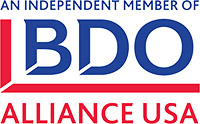
The trend of U.S. workers leaving their jobs and employers struggling with high levels of employee turnover continues to gain momentum. Another 4.5 million U.S. workers quit their jobs in November alone, according to data from the U.S. Bureau of Labor Statistics. Meanwhile, the number of job openings in the United States remains elevated at 10.6 million, as companies across sectors and industries continue to have a hard time recruiting and retaining employees.
How are the issues related to what is now called the “Great Resignation” affecting plan sponsors in particular? The current environment not only makes it hard to build and manage an effective workforce, but plan sponsors also may face problems down the road when departing workers leave their 401(k) balances with their previous employers.
Growing Concern of Abandoned 401(k) Accounts
An estimated 2.8 million 401(k) accounts are forgotten, left behind, or abandoned each year, representing an average account size of $55,400, according to Capitalize, a fintech company that consolidates 401(k) plans. (For the purposes of this article, we use the term “abandoned” to cover these accounts whether they are forgotten or left behind intentionally at a previous employer.)
Abandoned accounts aren’t just a potential issue for employees—they can lead to penalties and administrative challenges for employers, too. Capitalize notes that abandoned 401(k) accounts can cost employers up to $700 million in administrative fees. Failing to follow missing participant guidance or forfeiture rules also may lead to penalties for plan sponsors.
How can plan sponsors resolve these issues?
Fortunately, there are some easy ways for plan sponsors to limit the potential burden of abandoned 401(k) accounts. Plan sponsors should start by ensuring that they have up-to-date contact information before an employee’s final day with the organization. Cell phone numbers, email addresses, and mailing addresses are critical data points to gather. Email addresses and other digital contact information are especially important in today’s increasingly digital world.
Existing rules can help employers resolve smaller accounts that are abandoned. By law, employers are allowed to cash out small, vested accounts of $1,000 or less. For vested account balances between $1,000 and $5,000, employers are permitted to move these assets to an Individual Retirement Account (IRA).
Currently, there is no specific guidance for account balances larger than $5,000. Because of this, employers have relied on Field Assistance Bulletin (FAB) 2014-01, which is meant for participants in terminated defined contribution plans. Under this bulletin, plan sponsors are instructed to send a certified letter to the participant’s last known address; keep records on attempts to reach the missing participant; ask co-workers how to find the missing participant; and call the missing participant’s cell phone, among other instructions.
To help mitigate these issues in the future, some employers are adopting auto-portability benefits. These tools automatically transfer small balances to new employers. Plan sponsors that offer auto-portability benefits should explain how this tool works to departing employees.
Plan Document Language on Forfeitures and Cash-Outs
For participants who leave before they are fully vested in a 401(k) plan, employer contributions are typically placed in forfeiture accounts. This section of the plan document can be written in a variety of ways, so it is crucial to understand how the timing and use of the forfeiture account is established in your specific plan.
For example, forfeitures can be paid at the time of termination or when the participant hits a five-year break in service. Employers wanting to access non-vested amounts more quickly should consider amending the plan document to allow access to non-vested amounts at the time of termination (as opposed to the time of distribution).
While plan documents can set cash-out thresholds (within the minimum and maximum allowable amounts), plans may elect the small balance cash-out option for accounts under $5,000. Rollover balances also can be disregarded when determining the $5,000 threshold, but this caveat must be written into the plan document.
Insight: Don’t Waste a Plan Restatement Cycle
Every six years, the Internal Revenue Service (IRS) requires employers with qualified, pre-approved plans to have their basic plan documents re-written or restated onto new plan documents. The current restatement cycle for defined contribution plans will close on July 31, 2022.
The current restatement cycle provides an opportunity to amend your plan to make it beneficial to employers and employees when team members leave your organization. Your advisor can help review your plan documents and make the most of your plan restatement process in the context of current trends in the labor market and your organization’s objectives.
If you have any questions or would like to further discuss your plan, feel free to call us at 708-386-1433.




